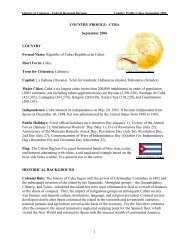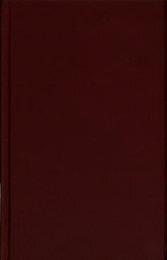Anton Webern's Six Pieces for Ocrhestra, op. 6, Arrangement for ...
Anton Webern's Six Pieces for Ocrhestra, op. 6, Arrangement for ...
Anton Webern's Six Pieces for Ocrhestra, op. 6, Arrangement for ...
Create successful ePaper yourself
Turn your PDF publications into a flip-book with our unique Google optimized e-Paper software.
evision history of <strong>Webern's</strong> works. We should remember here that Webern--like<br />
Berg, but unlike Schoenberg--was not able to publish his music under regular<br />
publishing agreements until the 1920s. All his earlier attempts to find a publisher<br />
had failed, so that practically his entire early output, except <strong>for</strong> the <strong>Six</strong> <strong>Pieces</strong> <strong>for</strong><br />
Orchestra (and a few single numbers from larger work cycles), remained at first<br />
unpublished. Having reached a contractual agreement with Universal Edition in the<br />
summer of 1920, the composer there<strong>for</strong>e subjected his entire oeuvre to a general<br />
review, not only selecting and regrouping works <strong>for</strong> publication, but also revising<br />
them thoroughly. 28<br />
Although their "Urfassung," exceptionally, had been published, this applies also to<br />
the <strong>Six</strong> <strong>Pieces</strong>, <strong>op</strong>. 6, which Webern republished in 1928 in a revised version. 29 This<br />
new version, in which Webern reduced the orchestral scoring (by 2 flutes, 1<br />
clarinet, 1 bass clarinet, 2 horns, 2 trumpets, 1 harp as well as the "Rute" [a rod to<br />
be used on the bass drum]) and which he considered to be the only valid one, 30<br />
differs from the original orchestral setting in many details; in particular we can<br />
observe a considerable thinning out of the texture (which goes beyond the removal<br />
of doublings), a shortening of the fourth and sixth pieces by one measure each, and<br />
atightening of the correlation between instrumentation and structural design. The<br />
middle section of the fourth piece can illustrate the latter. The passage in measures<br />
12 to 31 (or 11 to 30) is conceived as a succession of four instrumental solos with<br />
chordal accompaniment. In the revised version these four solos are recast in such a<br />
way that they recall the succession of timbres of the work's first three chords (whose<br />
instrumentation remains very close to the original score): 2 flutes/2 clarinets--4<br />
horns--4 trumpets. They thus establish a correspondence of colors which is not<br />
present in either the original or the chamber versions (see also the musical example<br />
above):<br />
Chords, mm. Solos, mm.<br />
9-10 (8-9) 12 (11), 20 (19), 21 (20), 24 (23)<br />
1909: 4 Fl. - 6 Hrns. - 4 Tpts. E-fl.Clar. - G.Fl. - Hrn. - Tpt.<br />
1920: (Fl.) Ob. - E-fl.Clar. - Harm. - Vc. - E-fl.Clar<br />
(Clar.) Pno. Harm.<br />
(Harm.)<br />
1928: (2 Fl.) 4 Hrns. - 4 Tpts. Picc. - Clar. - Hrn. - Trpt.<br />
(2 Clar.)<br />
Inasmuch as the <strong>for</strong>m-articulating role of instrumentation appears only in the



![Albert Einstein Papers [finding aid]. Library of Congress. [PDF ...](https://img.yumpu.com/21604228/1/190x245/albert-einstein-papers-finding-aid-library-of-congress-pdf-.jpg?quality=85)





![American Colony in Jerusalem Collection [finding aid]. Library of ...](https://img.yumpu.com/17941275/1/190x245/american-colony-in-jerusalem-collection-finding-aid-library-of-.jpg?quality=85)



![Piccard Family Papers [finding aid]. - American Memory - Library of ...](https://img.yumpu.com/17941234/1/190x245/piccard-family-papers-finding-aid-american-memory-library-of-.jpg?quality=85)


